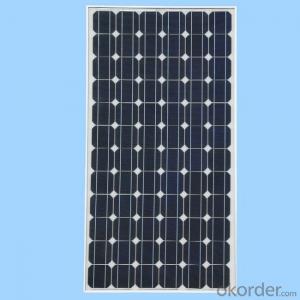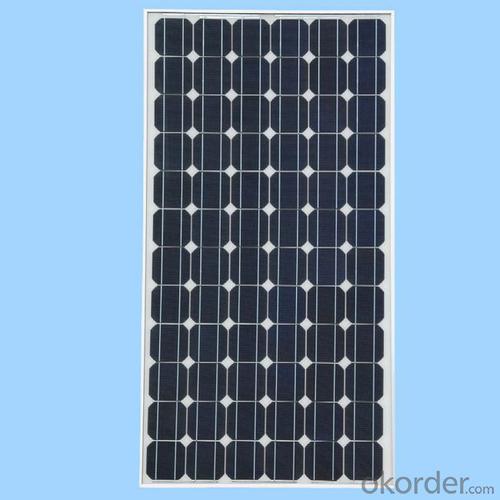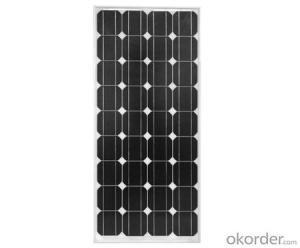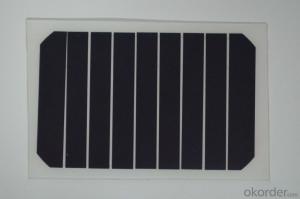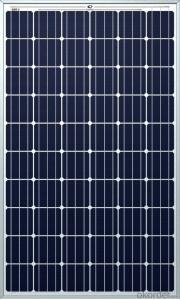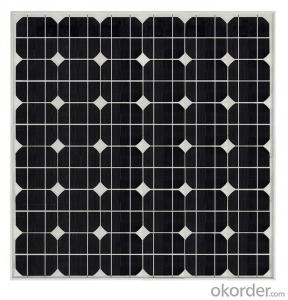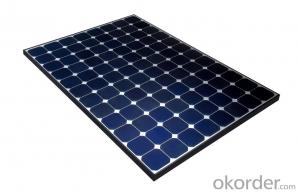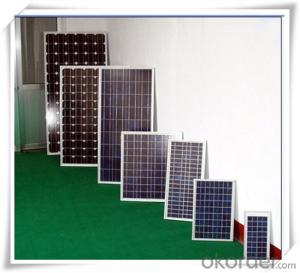Micro Inverters Compatible 5W to 300W OEM Monocrystalline Silicon Solar Panels CNBM
- Loading Port:
- Qingdao
- Payment Terms:
- TT OR LC
- Min Order Qty:
- 10 set
- Supply Capability:
- 300000 set/month
OKorder Service Pledge
OKorder Financial Service
You Might Also Like
5W to 300W OEM Mono solar panels --- Factory direct sale
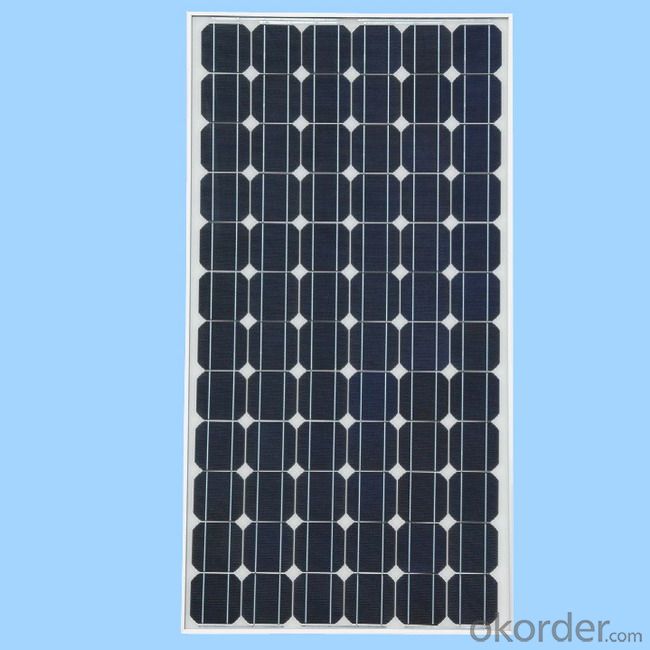
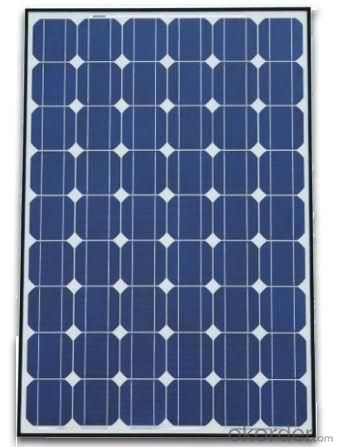
Quick Details
| Place of Origin: | Guangdong, China (Mainland) | Brand Name: | CNBM | Model Number: | SGM-2F-160W |
| Material: | Monocrystalline Silicon | Size: | 505*1005*70mm | Number of Cells: | 36pcs |
| Max. Power: | 160Wp | Modes of Supply: | Factory Directly Supply | OEM panel solar: | Acceptable |
| Cell Brand: | Taiwan solar cells | Cell efficiency: | 15.94%-18.10% | Frame: | Aluminium Alloy |
| Certificates: | TUV, IEC, CE, ISO9001/14001 and RoHS |
Packaging & Delivery
| Packaging Details: | carton box & wooden pallet [ solar panels ] |
| Delivery Detail: | 10-15working days after order confirmed |
Product Description
1.with controler, cable, mounting and bag, ready to use
2.High transmittance low iron tempered glass with enhanced stiffness and impact resistance
3.Unique frame design with high mechanical strength for easy Installation.
4.Advanced encapsulation material with multiplayer sheet lamination to provide efficient protection from the severest environmental conditions
5.Outstanding electrical performance under high temperature and low irradiance conditons
6.it can be widely used for home, for camping, for emergency
Electrical Character
| Electrical Characteristics | |
| Model | SGM-2F-2x80W |
| Cells size (mm): | 156*78 |
| Cells per module: | 36pcs |
| Module size (mm): | 505*1005*70mm |
| Power tolerance: | +/-3% |
| Nominal peak power(WP): | 160w |
| Nominal voltage(V): | 17.7 |
| Nominal current (A): | 9.03 |
| NOCT: | 45+/-2degree |
| Voltage temperature coefficient: | -0.33%/degree |
| Current temperature coefficient: | +0.05%/degree |
| Power temperature coefficient: | -0.23%/degree |
| Open circuit voltage (Voc): | 21.6 |
| Short cirsuit current(Isc): | 9.76 |
| Conversion efficiency: | 18.40% |
| Product name : | protable solar panel |
| Max system voltage: | 1000V DC |
| Surface Maximum Load Capacity | 60m/s(200kg/sq. m) |
- Q: How do solar panels affect the overall resilience of a building?
- Solar panels can significantly enhance the overall resilience of a building. By generating clean and renewable energy, they reduce dependence on traditional power grids, making the building less vulnerable to power outages or disruptions. Additionally, solar panels can provide a reliable source of electricity during emergencies, ensuring critical systems like lighting or communication remain operational. The energy independence offered by solar panels enhances the building's ability to withstand and recover from various crises, ultimately improving its overall resilience.
- Q: ) what is absolutely needed to hook up a solar panel to grid tie, what permits and/or inspectors are needed?2) if we know how many KWH's we use per month, do we just divide by number of hours per month to find out average KW usage?3) what is an estimated ratio of DC to AC transformation/convertion @ 30 C?4) do the solar panel voltages have to be the same? what would happen if the voltage going into the house is greater/lower than that of the house's defualt voltage5) for added chance of getting 0 pts add some contrators that do business in ohio for installing solar panels or sell them
- The okorder The reference section has all the formulas you are looking for and there is a list of dealers by state, plus various state rebate information. Yes, you can hook up different panels to the same system. There are special controllers that regulate the voltage. I'm more of a hands on nuts and bolts guy so I can't help you with the formulas and engineering explanations. Another great place to get information is Home Power Magazine. You can get the issues online or in print. Thanks for going solar!
- Q: Got a quote for about $K today for solar panels to save me about $00 a month on my electric bill. I was just wondering if anyone had successfully bought and installed their own and how it worked for you?
- Homemade okorder /
- Q: Can solar panels be installed on south-facing windows?
- Yes, solar panels can be installed on south-facing windows, as long as there is enough sunlight exposure throughout the day. South-facing windows tend to receive the most sunlight, making them a suitable location for solar panel installation. However, it is important to consider any potential obstructions or shading that may affect the panel's efficiency.
- Q: Do solar panels require batteries?
- No, solar panels do not require batteries. They generate electricity directly from sunlight and can be connected to the electrical grid to supply power or utilize net metering to offset energy consumption. However, batteries can be used to store excess energy for later use when solar generation is low or during power outages.
- Q: What is the impact of bird droppings on solar panels?
- Bird droppings can have a negative impact on solar panels as they can reduce the efficiency of the panels by blocking sunlight and reducing the amount of energy they can generate. Additionally, the acidic nature of the droppings can potentially damage the surface of the panels over time if not cleaned properly. Regular cleaning and maintenance are necessary to ensure optimal performance and longevity of solar panels in areas where bird droppings are prevalent.
- Q: Can solar panels be installed in areas prone to hurricanes or tornadoes?
- Yes, solar panels can be installed in areas prone to hurricanes or tornadoes. However, it is important to design and install the solar panel system with the specific weather conditions in mind. This includes using appropriate mounting systems, ensuring proper anchoring and reinforcement of the panels, and using high-quality materials that can withstand strong winds. Additionally, regular maintenance and inspections should be conducted to ensure the panels remain in optimal condition.
- Q: Can solar panels be installed on a tennis court or sports complex?
- Yes, solar panels can be installed on a tennis court or sports complex. These areas often have large open spaces with ample sunlight, making them ideal for solar panel installations. Additionally, integrating solar panels into sports facilities can help offset energy costs and promote sustainability.
- Q: does anybudy know about solar panels? plz reply me
- Solar panel refers to a panel designed to absorb the sun's rays as a source of energy for generating electricity or heating.A photovoltaic (in short PV) module is a packaged, connected assembly of typically 6×0 solar cells. Solar Photovoltaic panels constitute the solar array of a photovoltaic system that generates and supplies solar electricity in commercial and residential applications.
- Q: What are the different types of solar panels?
- There are three main types of solar panels: monocrystalline, polycrystalline, and thin-film. Monocrystalline panels are made from a single crystal structure, offering high efficiency but also higher costs. Polycrystalline panels are made from multiple crystal structures, slightly less efficient but more cost-effective. Thin-film panels use a layer of semiconductor material, providing the lowest efficiency but the ability to be flexible and lightweight.
Send your message to us
Micro Inverters Compatible 5W to 300W OEM Monocrystalline Silicon Solar Panels CNBM
- Loading Port:
- Qingdao
- Payment Terms:
- TT OR LC
- Min Order Qty:
- 10 set
- Supply Capability:
- 300000 set/month
OKorder Service Pledge
OKorder Financial Service
Similar products
Hot products
Hot Searches
Related keywords
